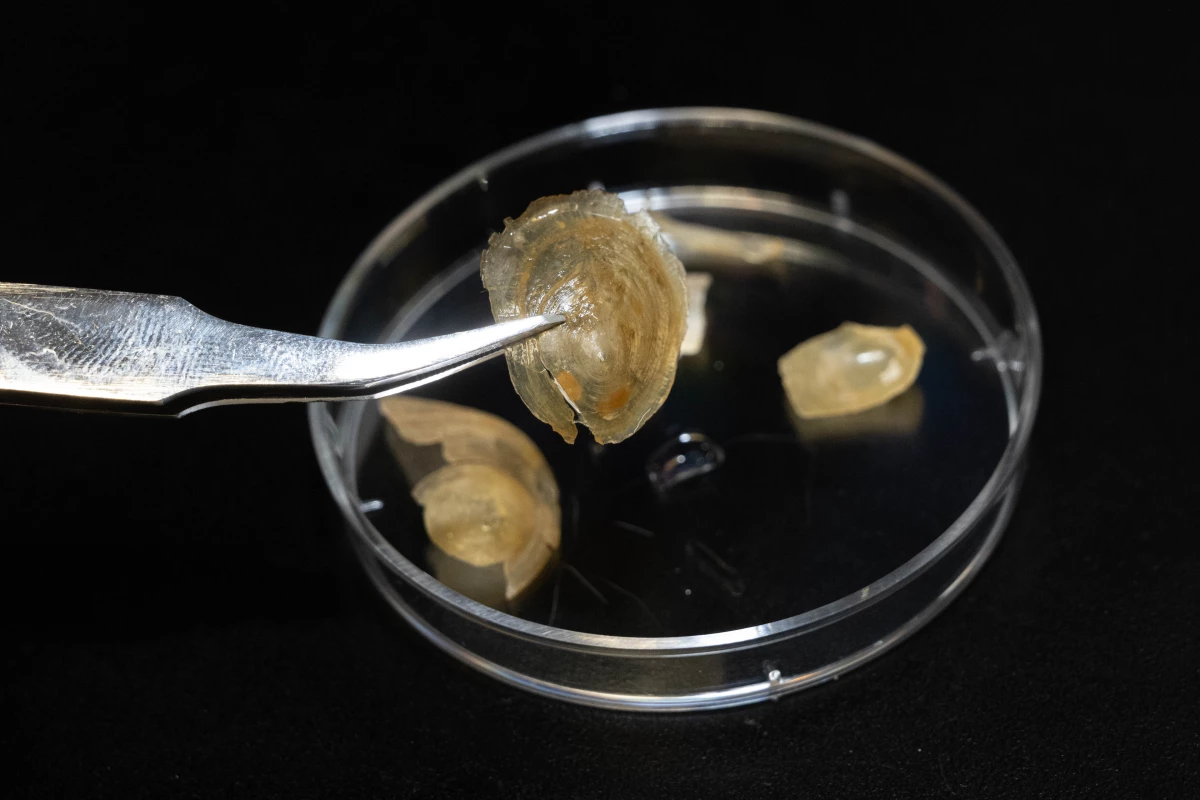Imagine if there was protective clothing that usually stayed soft and comfortable, but that could instantly harden when needed. Such technology may someday be possible, thanks to a new understanding of a tiny animal's shell.
Brachiopods are small marine creatures that look quite a bit like molluscs, but are in fact not closely related to them. One African brachiopod, known as Discinisca tenuis, has a particularly interesting characteristic – its protective outer shell is soft and flexible in the water, but becomes hard when dry.
In a recent study, an international team of scientists utilized a process called cryo-tomography to analyze some of those shells, which are only about half a millimeter thick. It was found that the shells have a brick-wall-like structure, in which the "bricks" are nanocrystals of a fluoroapatite mineral (similar to our tooth enamel), while the "mortar" that joins the bricks is made of organic molecules like chitin and various proteins.
When that mortar is dry, it holds the bricks together in a rigid, unyielding fashion. Once the mortar gets wet, however, it quickly becomes soft, allowing the bricks to slide back and forth against one another. A network of pores within the shell helps to guide water into the mortar, facilitating the process.
It is believed that this quality may help clusters of Discinisca tenuis to survive in their intertidal habitat. When the creatures are exposed to the air during low tides, their shells harden to offer protection from predators and the elements. When they're immersed, though, their shells soften so that adjacent brachiopods won't damage one another as they sway back and forth in the waves.
The scientists hope that technology inspired by this mechanism could someday be utilized in applications such as adaptive sports helmets, shoulder pads or other protective clothing. A paper on the research – which was led by Dr. Johannes Ihli of Switzerland's Paul Scherrer Institute – was recently published in the journal Nature Communications.
Source: Paul Scherrer Institute




